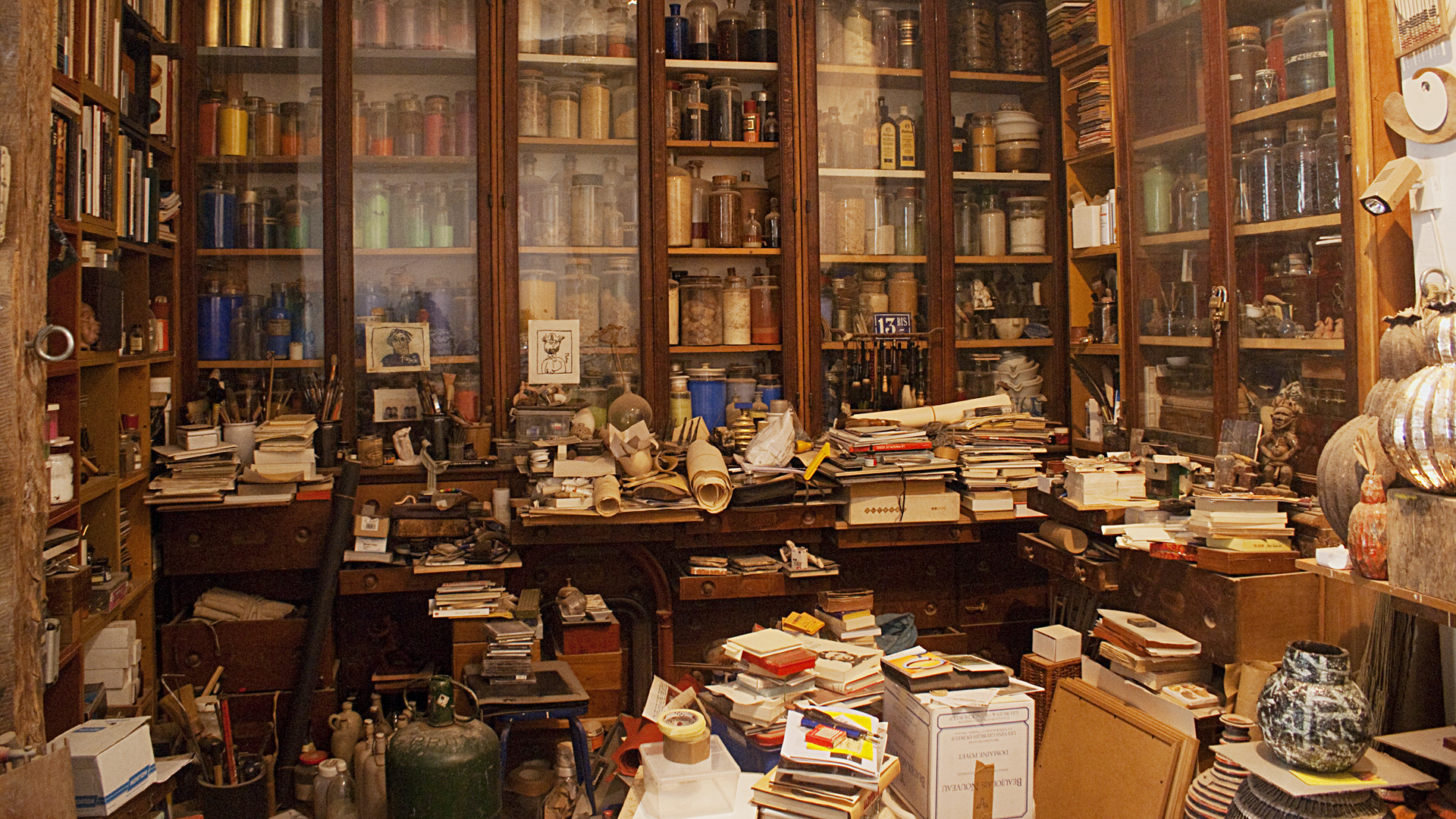The Artist Studio
14 May 2010 permalink
When organizing something, either kitchen ingredients, hardware tools, or your favorite computer program, there are basically 2 factors that need to be considered.
One is, of course, the ease of use, and this is the original reason we organize stuff. People tend to say we organize things so we can find them, but in reality it’s more general than that. We do it to get stuff as soon as possible, and finding it is only a part of it. When you are working in the kitchen, with dirty hands, you don’t want to open any pots or cupboard, because it’ll take you time to clean.
The other one is ease of learning. All time spent to become proficient at some system, should be smaller than the time gained from using the system. It’s all about time, really. This can be frustrating, because often one is not faster immediately, and often a lot slower. I had this when I learned a new keyboard layout that is marginally better suited to programming. Consistency is also a very important topic here. In this context, it means that everything is structured in a similar way, so that the bulk of different kind of systems to learn is reduced, and everything becomes more intuitive. There are things a programmer can do to break consistency in the code, that will have zero impact on the quality of a software. However, if I ever see these mistakes made by anyone not fresh out of school (or even then), I will kill him and none of my peers will complain. You learn one way of doing something, and you expect everything else to work in a similar way. And if it does, you don’t spend any time at all. It’s complex though, because sometimes the intuitive way to do things this not the best way. If it was, we would all be asking grammatically correct questions to google, instead of typing in some keywords and praying. When in doubt, ask yourself the simple question: will the time invested pay off?
Now, let us move to the interesting part. The human factor.
Let us start with two steraotypes of organization.
Scene one is a mechanic’s shop with about 15 people working at any given time. Tools all have their designated place on the wall. Putting them somewhere else, or leaving them at your personal work space after you leave for home, is punishable by death. There’s a guy higher than you that is pretty strict about this.
Scene two is a lone mechanic, with tools scattered all over the place. Shelves are open, and overflow. Everything is greasy. Lot’s of tools are double, but there’s only one person working in this space.
Now, ask yourself, which one is better organized?
I’m guessing many people will say the first. But this is dead wrong, according to the definitions above. The former is only more efficient, as it’s easier to learn the system when you’re new. There are rules that are easy to learn, and everything is consistent. It’s very easy to be productive fast in this system. The second one seems
The french expression : mise-en-place
Now, in the second scene, this guy doesn’t even need a mise-en-place. Everything is already there. He probably has some tools double, so he doesn’t have to walk across the room to get it. Maybe even there is an imperceptible difference between the 2 tools that you haven’t noticed yet.
I think we have to conclude that both are more organized, as they get more work done according to how these spaces are used. But it won’t spare the lonely mechanic from incessant gripes from people who fail to see the beauty of his perfectly crafted work-space.